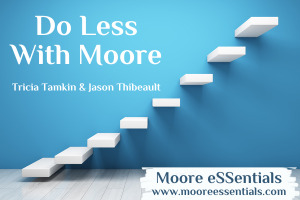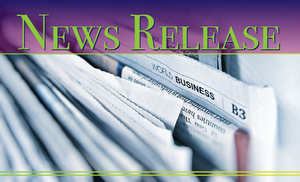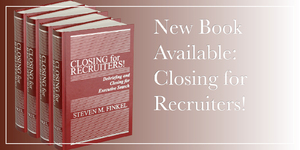It’s the beginning of the year and you’re likely starting to see promo ads for the industry trade shows. They’re often in glamourous sounding destinations like Vegas, San Diego or Denver, and the ads for the show are tempting with offers of technology or prizes to the lucky winners. The allure is obvious: lots of people in one place, it’s days out of the office and off the phone, travel sounds glamorous, and trade show swag is tantalizing. You begin to dream of all the placements that could happen with that many prospective clients and candidates all in one place.
Trade shows can be a bonanza for growing your business. Or, they can be an expensive and low-return boondoggle. It’s your choice.
Let’s look at the facts about trade shows:
• There are over 10,000 trade shows in the US/year, and the number is growing by 3%/year.
• It’s a $100B industry.
• There ARE lots of people in one place – not uncommon to have 10K to 20K visitors/show.
Trade shows relevant to your desk specialty can be a valuable tool to elevate your visibility and credibility as expert in your specialty.
• You should know what they are and when they are.
• Which ones do your clients exhibit at to connect with their customers?
• Which ones do your clients attend to get access to their suppliers?
• They are a source of new news and industry intel.
• It positions you as a person “in the know”.
• Some you follow; some you work.
SPOILER ALERT: You don’t have to attend a trade show to make money from a trade show. You can work a trade show by working the trade show by attending on-site or just working it while virtual.
On-site: you invest the time, effort and money to work the show and attend the show
Virtual: you invest the time and effort to work the show, but you stay at home
Blended: you invest the time and effort to work the show before the show to decide if you should spend the money to attend the show
And, whether you pursue an on-site or virtual attendance strategy, there is work to do before, during and after the trade show.
Before
Your ‘Before’ the trade show work should begin two months prior to the trade show. Doing the ‘Before’ work will help you get a return from a trade show, regardless of whether you’re attending on-site, virtually, or working a blended approach. Or, it will help you decide if your time and money is better spend staying at your desk and working the trade show virtually.
• Identify exhibitors
• Build target list for Marketing calls
• Build Trade Show conversation into all Marketing and Recruiting conversations
• Create Send Out/connection possibilities for Trade Show floor
• Close for Assignments
• Close for F2F meeting opportunities
• Schedule closing interviews
• Call speakers as referral sources on open searches
• Set quantifiable goals to justify travel and out-of-office expense:
Potential assignments
Send outs
Client visits
• Request complimentary “Expo Passes” that can get you free or discounted admission
STOP AND DO NOT PASS GO: By beginning to use a trade show as the focus for your marketing and recruiting 2+ months prior to the show, you should be able to generate data to determine whether you’ll get a better return on a trade show by spending the travel time/money to attend on-site, or whether your time is best spent working the trade show from the profit center of your desk in your office. You should NOT invest time/money in attending a trade show on-site unless you have the following in place 2 weeks prior to the show:
• 10 scheduled meetings (date, time, place, purpose) with clients, prospective clients and/or potential candidates
• 3 open job orders on which you’ll be able to do focused name gathering and/or introductions
• 3 hot candidates with which you’ll be able to generate unscheduled marketing conversations
• 50 target companies identified by booth/aisle number where you are looking to gather intel
If you choose to attend a tradeshow on-site with anything less than these 4 money making activities lined up, you are choosing a tradeshow boondoggle. Remember, trade shows can be a desk building bonanza, or they can be an expensive boondoggle. It’s your choice.
During
Your ‘During’ the trade show work begins as folks are arriving at the trade show. You can do the ‘during’ work regardless of whether you’re on-site at the trade show or working the show virtually. If a significant portion of your target clients or candidates are at the trade show, you want to work it as though you are at the trade show, demonstrating the same urgency and time sensitivity they’ll be experiencing while at the trade show.
|
On-site
|
Virtual
|
|
Work each aisle of the expo with a plan
Know what and who you’re looking for (NO “Hey, I just wanted to say ‘hi.”)
Schedule send-outs
|
Keep working the phones
Work to capture Search Assignments
Work for candidate referrals
Schedule send-outs
|
After
Some of the best return on working a trade show happens by continuing to work the trade show ‘After’ the trade show, and you can benefit from the trade show regardless of whether you attended on-site or virtual. Just as you spent the 2 months prior to a trade show asking powerful questions about industry forecasts and hot topics as a way of uncovering needs, so can you use the same topics to create meaningful and business building conversations after the trade show.
For the 2 months after the trade show, leverage the trade show in your conversations by asking powerful questions:
“What was hot at the show?”
“Your biggest surprises?
“What were your goals at the show? How did you do with those?
“What companies caught your attention?
“How does what you learned at the tradeshow shift or reinforce your career goals?
“What changes are you making in your business based on what you learned at the trade show?”
“What skill sets do you need on your team to become/stay a leader in your space?
There are many advantages to incorporating tradeshows into your ongoing desk-building business strategy.
• Touchstone for urgency and advancing
• Deepen your industry expertise
• Insight into industry issues and trends
• Big boost to your database
• High volume activity in compressed time
• Add variety and interest to your Marketing and Recruiting calls
When you leverage the Before, During and After strategy when working a trade show, you can choose whether the trade show turns out to be a bonanza or a boondoggle.





